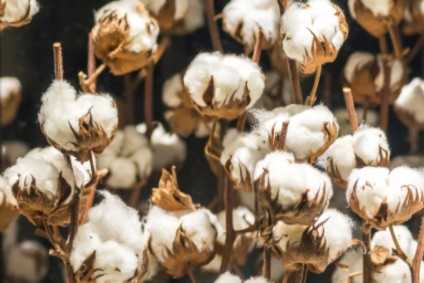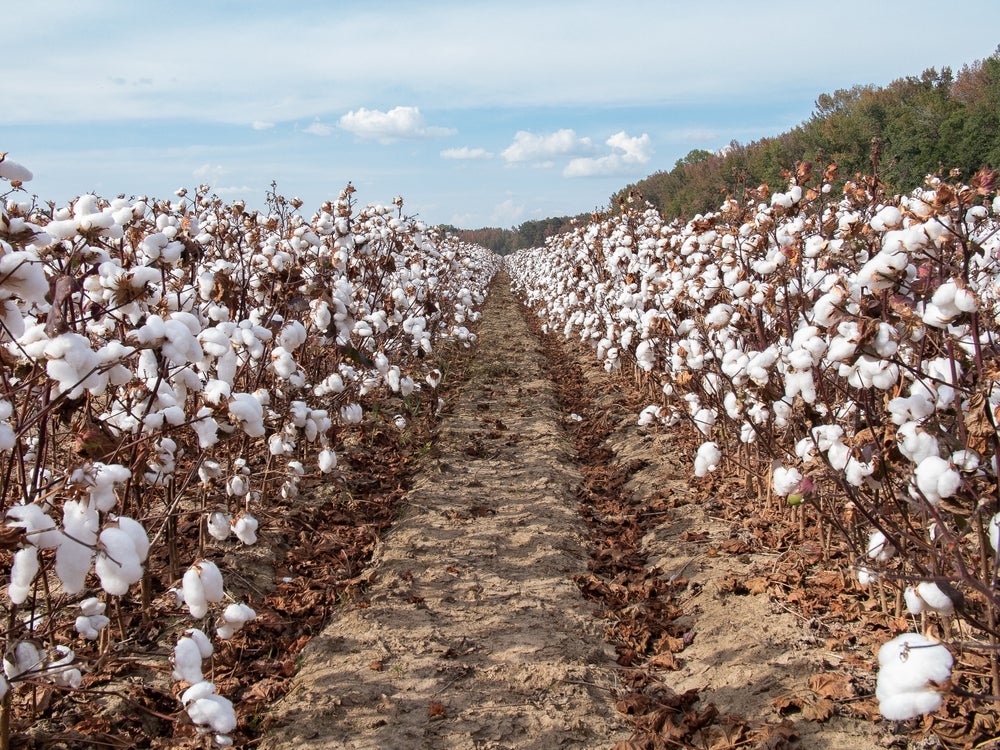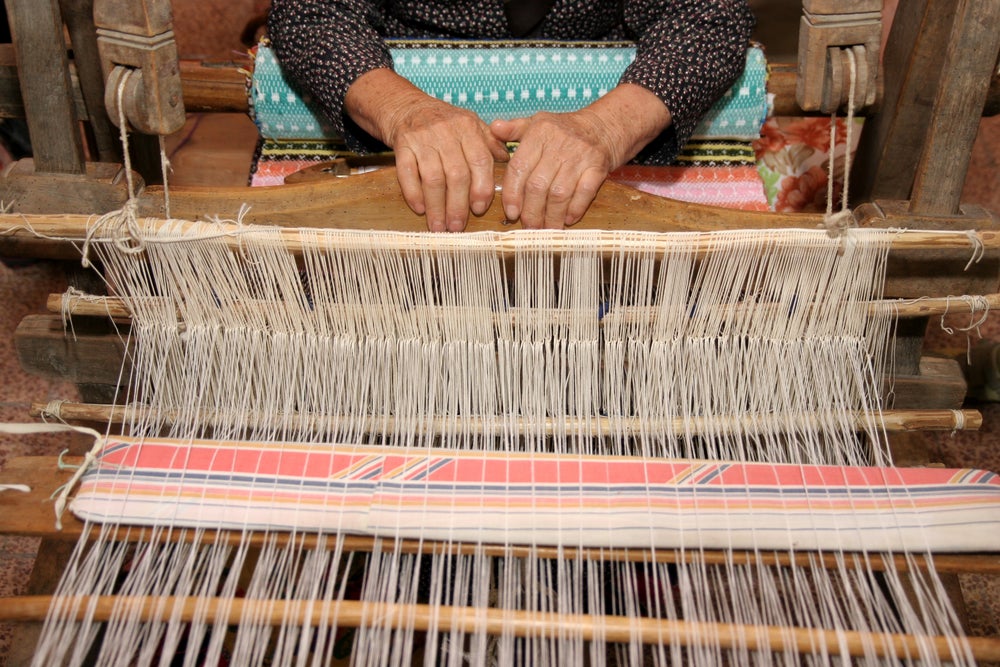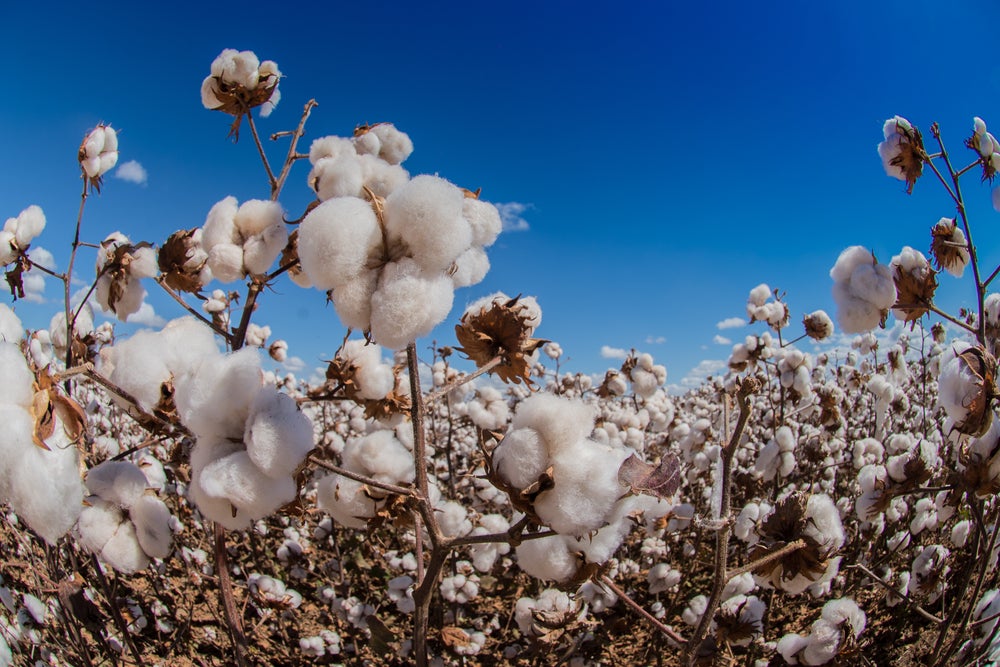
Sustainably sourced cotton continues to gain greater market share in a move industry executives say must be furthered in light of disruptions such as climate change and the Covid-19 pandemic to mitigate risk and drive greater transparency across the apparel sector.
Today, 22% of the world’s cotton is more sustainable, according to figures from the second annual ‘2025 Sustainable Cotton Challenge Report’ which was released by Textile Exchange yesterday (3 June).
The market share of preferred virgin cotton increased from 5% of the total cotton production in 2012/13 to 22% in 2017/18. This equals an increase in global production volume of preferred cotton from 1.4m metric tonnes in 2012/13 to 6m mt in 2017/18.
In the last year, production grew 58% from 3.8m metric tonnes to 6m metric tonnes.
The Challenge was formed in 2017 when His Royal Highness The Prince of Wales convened a group of CEOs through the work of his International Sustainability Unit that existed to address critical challenges facing the world. Those original 13 CEOs committed to working together to accelerate the use of sustainable cotton, which paved the way for other industry leaders to follow – resulting in 82 companies now committed to sourcing 100% sustainable cotton by 2025.
See Also:
The purpose of the 2025 Challenge is to accelerate the uptake of organic and preferred cotton, which has the ability to increase the income of smallholder farmers, eliminate highly hazardous pesticides, eliminate or reduce the amount of pesticides and synthetic fertiliser used, reduce water use and improve water quality and soil health.
How well do you really know your competitors?
Access the most comprehensive Company Profiles on the market, powered by GlobalData. Save hours of research. Gain competitive edge.

Thank you!
Your download email will arrive shortly
Not ready to buy yet? Download a free sample
We are confident about the unique quality of our Company Profiles. However, we want you to make the most beneficial decision for your business, so we offer a free sample that you can download by submitting the below form
By GlobalDataIts vision is by 2025, that more than 50% of the world’s cotton is converted to more sustainable growing methods. It also encourages brands and retailers to commit to source 100% of their cotton from the most sustainable sources by the same year.
These environmentally friendly sources are from the Textile Exchange list of recognised organic and sustainable cotton initiatives, including Better Cotton Initiative (BCI), Cleaner Cotton, Cotton made in Africa (CmiA), Fairtrade, Fairtrade Organic, Field to Market, and, more recently, the US Cotton Trust Protocol.
Textile Exchange’s second report provides information and statistics on the achievements and impacts these programmes are having on water, communities, soil quality, biodiversity and social considerations and regulations.
“By committing to using cotton from these initiatives and standards, the brands are ensuring that the intentions of their sustainable sourcing strategies are maintained and the integrity of their commitments uncompromised,” the organisation says.
Of the 82 Challenge signatories, 73 participated in the 2019 Corporate Fiber and Materials Benchmark programme to report on their progress towards their goal of 100% cotton being sourced from the approved initiatives by 2025:
- 27.5% of 2025 Sustainable Cotton Challenge signatories have achieved their 2025 target of 100% preferred cotton usage, all of which are organic.
- 27.5% have achieved a preferred cotton share of between 75-99%.
- 25% have achieved a preferred cotton share of between 50-74%.
- 15% have achieved a preferred cotton share of between 25-49%.
- 3% have achieved a preferred cotton share of less than 24%.
- 3% of their cotton is not being tracked yet.
From the niche to a market share of 22%, preferred cotton is gaining ground.
“As we release this report, we are in the midst of discovering what the impact of the coronavirus will be on our communities. The entire supply network is being impacted – including farmers who continue to plant and harvest with the changing of the seasons,” says Textile Exchange managing director, La Rhea Pepper.
“This is an excellent opportunity to pull in sustainable and preferred fibres as we reset and restart the textile industries’ powerful engine. Now is the time to make the paradigm shift from a price to value-driven business model, and to convey the value of our products in a way that will give factory and farm workers a fair price.”
Cara Smyth, founder of the Sustainable Business Coalition, adds: “The resiliency of our longterm sourcing strategies starts on the farm. As the climate changes and we experience disruptions like Covid-19, we need to sustain the momentum of market share growth of preferred cotton to actively manage risk, enable end-to-end visibility and deliver value to investors, consumers, employees, and the planet.”
Meanwhile, Alison Ward, CEO for CottonConnect, says the tide is turning on traditional supply chains, with demands for greater transparency generating a change from transactional relationships to transformational partnerships.
“For sustainable cotton to become standard business practice, the amount of sustainable cotton grown and bought must increase significantly,” she says. “The 2025 Sustainable Cotton Challenge sends a signal to millions of producers that there is a real demand for a more sustainable approach to cotton production that reduces the environmental and social costs.”
The ‘2025 Sustainable Cotton Challenge Report’ follows the release of Textile Exchange’s latest ‘Material Change Insights Report’ this week which shows nearly 40% of its brand participants sourced their materials from preferred sources – but investment into circularity remains limited.







